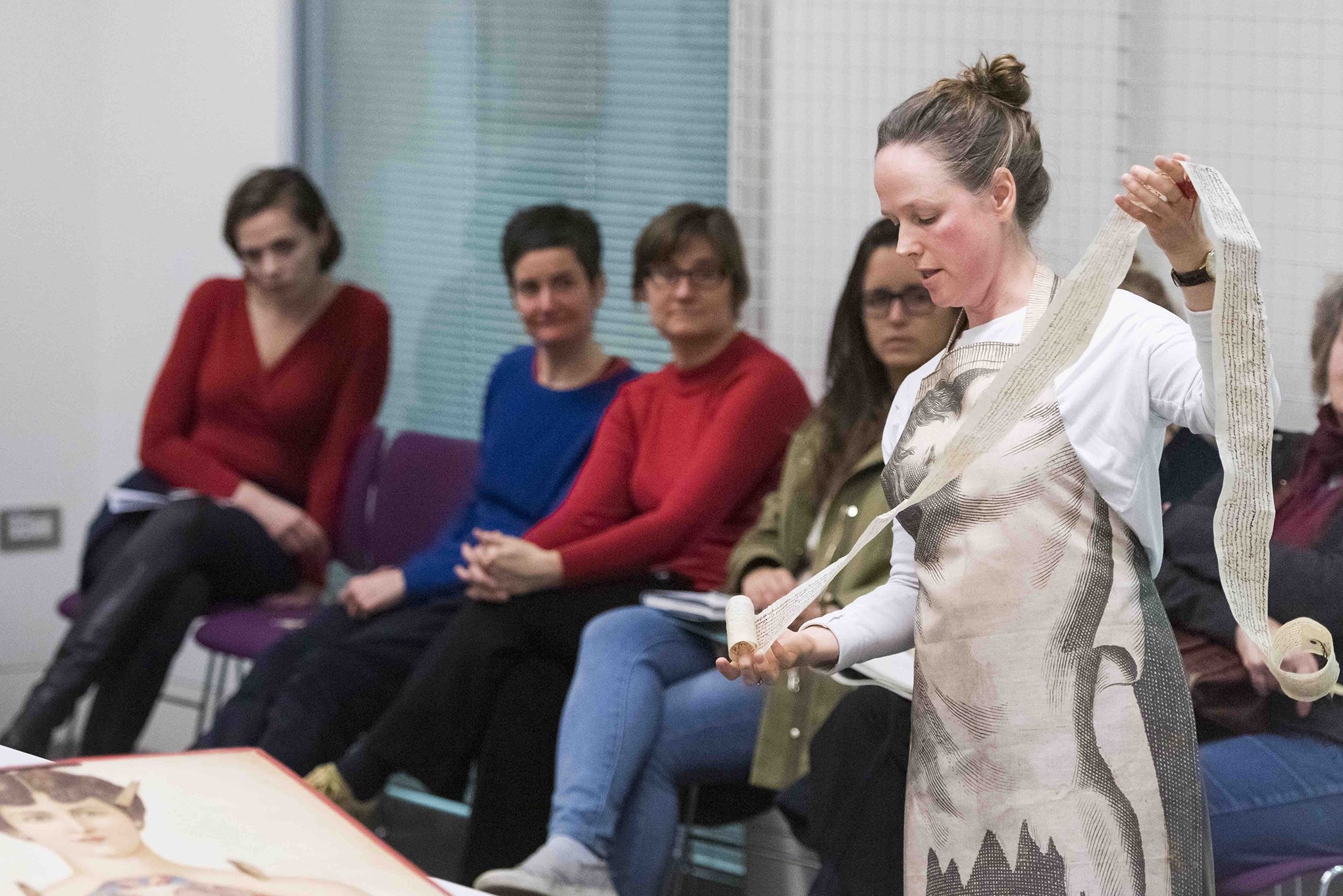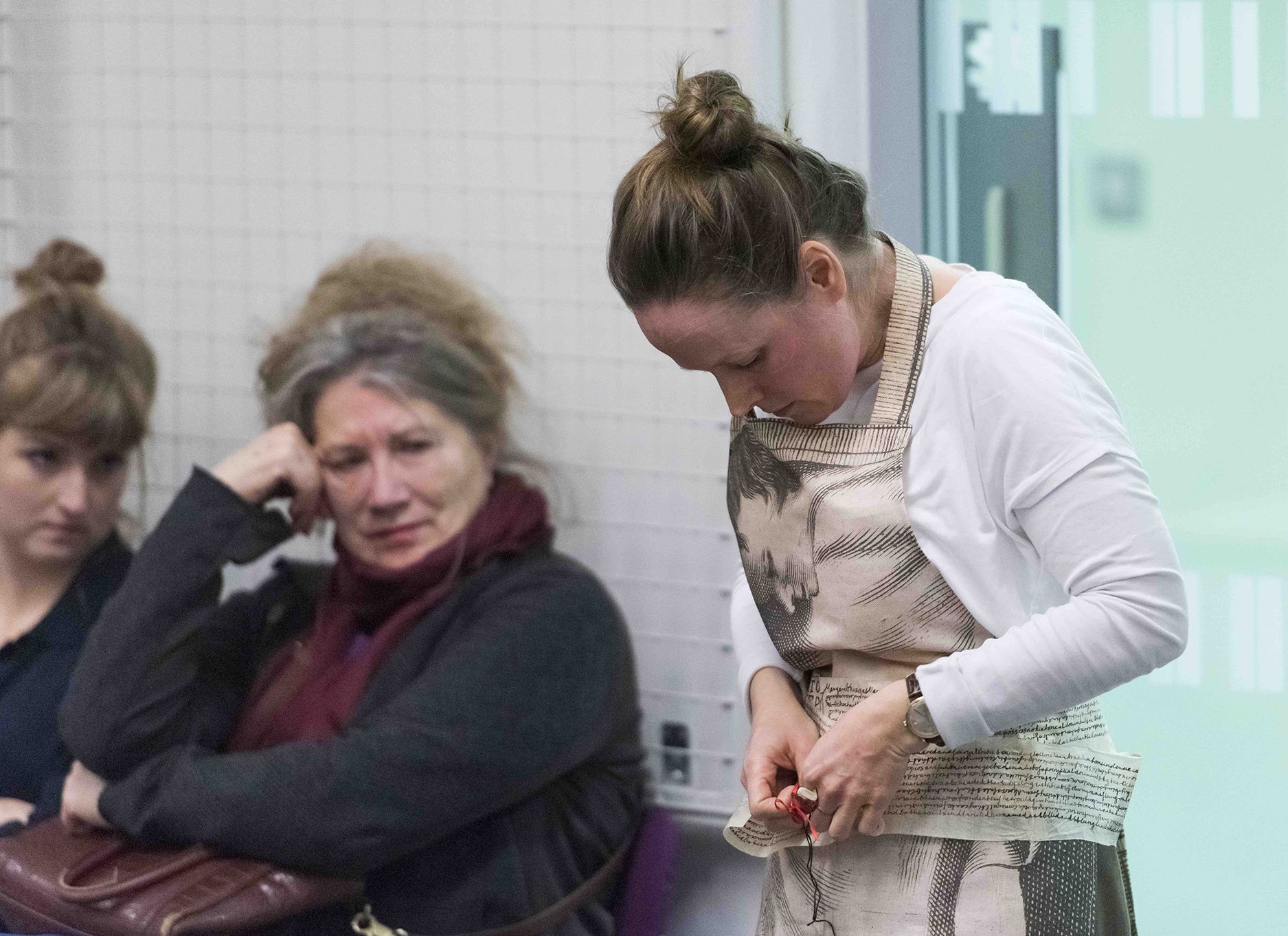This month we are pleased to introduce our featured artist Amanda Couch. We love how Amanda’s work is both visceral and empowering, bringing to light the ideas of the ritual, interconnecting the body and the natural world as one entity, reacting on and with each other. Here Amanda answers our questions and explains her practice in more detail.
Bio - Amanda Couch is an artist, researcher, and part-time senior lecturer in Fine Art at University for the Creative Arts, Farnham. UK. Amanda is currently co-curating The Commons: Re-Enchanting the World with Catherine Morland at the Museum of English Rural Life (The MERL), University of Reading, until January 2022.
1 - Could you explain your practice? Only you know why you do what you do.
My art practice cuts across media, straddling performance, the live and recorded image, print and the book, sculpture, food, participation, and writing. I feel as if I work in collaboration with other more-than-human things: materials like wheat, parchment, pastry, organs of the digestive system as well as ancient artifacts, like clay tablets, medieval birthing scrolls, or bodies of knowledge in other disciplines. Lots of my work engages with the continued fascination with innards in the human imagination and also often draws on the idea of interconnectivity: our entanglements with our own bodies and those of other more-than-human entities. Like the practice of Italian contemporary artist, Roberto Cuoghi, who imitates and replicates ancient cultural practices and artifacts, I often make my own versions to reinvent and reinterpret ancient objects and rituals in an attempt to discover new ways with which to connect to and interpret our past and to point to possible futures.
2 - Is art relevant today?
If anyone answers that art isn’t relevant today then they should be ready for the human species to wither and die. Even if we are not artists or creatives as our jobs then part of being human is being creative. That many people are robbed of this aspect of themselves through what might seem to be an innocuous comment at school, ‘you can’t draw or sing’, is a crime. Many people are also deprived of this part of their humanity because they experience trauma and/or financial hardship which takes up all of their time just for survival, which leaves little space to nurture themselves as creative beings.
When our prehistoric ancestors made cave paintings and objects, sang and danced, we can’t be sure what the exact purpose of these activities were, but I think we do recognise it as a way to create connections with human persons and other more-than-human entities, such as the animals they lived alongside, hunted and relied on for food, their ancestors whose knowledge they relied on and built upon to survive in their present, and the land itself, and this is something that we have lost in the Global North at least.
Back in the 1970s Joseph Beuys, artist and founder of the German Green party believed everyone was an artist. His concept of ‘Social Sculpture’ invited the transformation of society through the involvement of an active rather than a passive relationship with art: shifting inert audiences to becoming dynamic participants. For Beuys, these ideas were both political and spiritual. Individuals together built the social sculptural that was society itself by enabling the creativity of the population. If art is no longer relevant we become individual automatons and lose the very essence of our humanity.
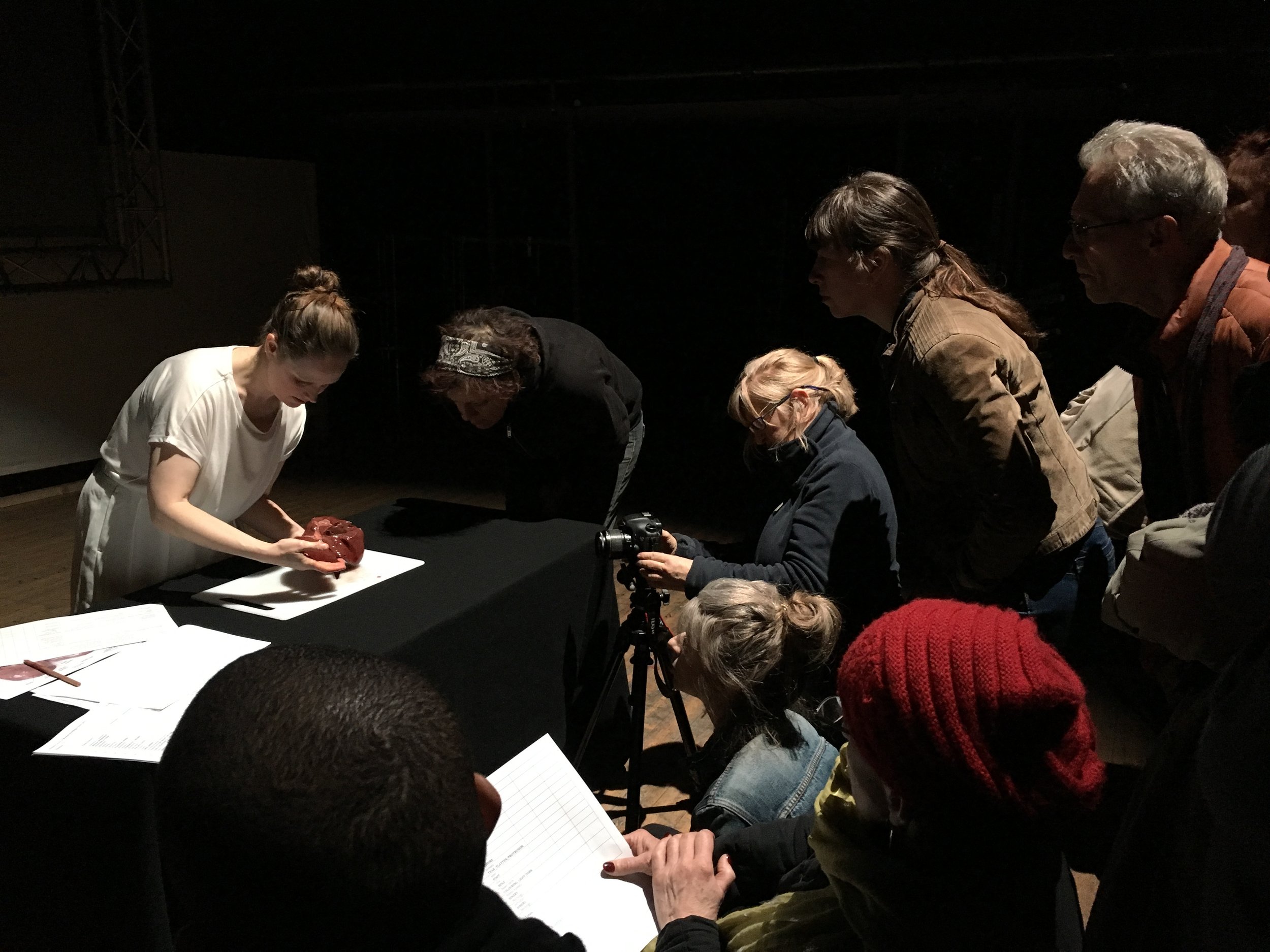
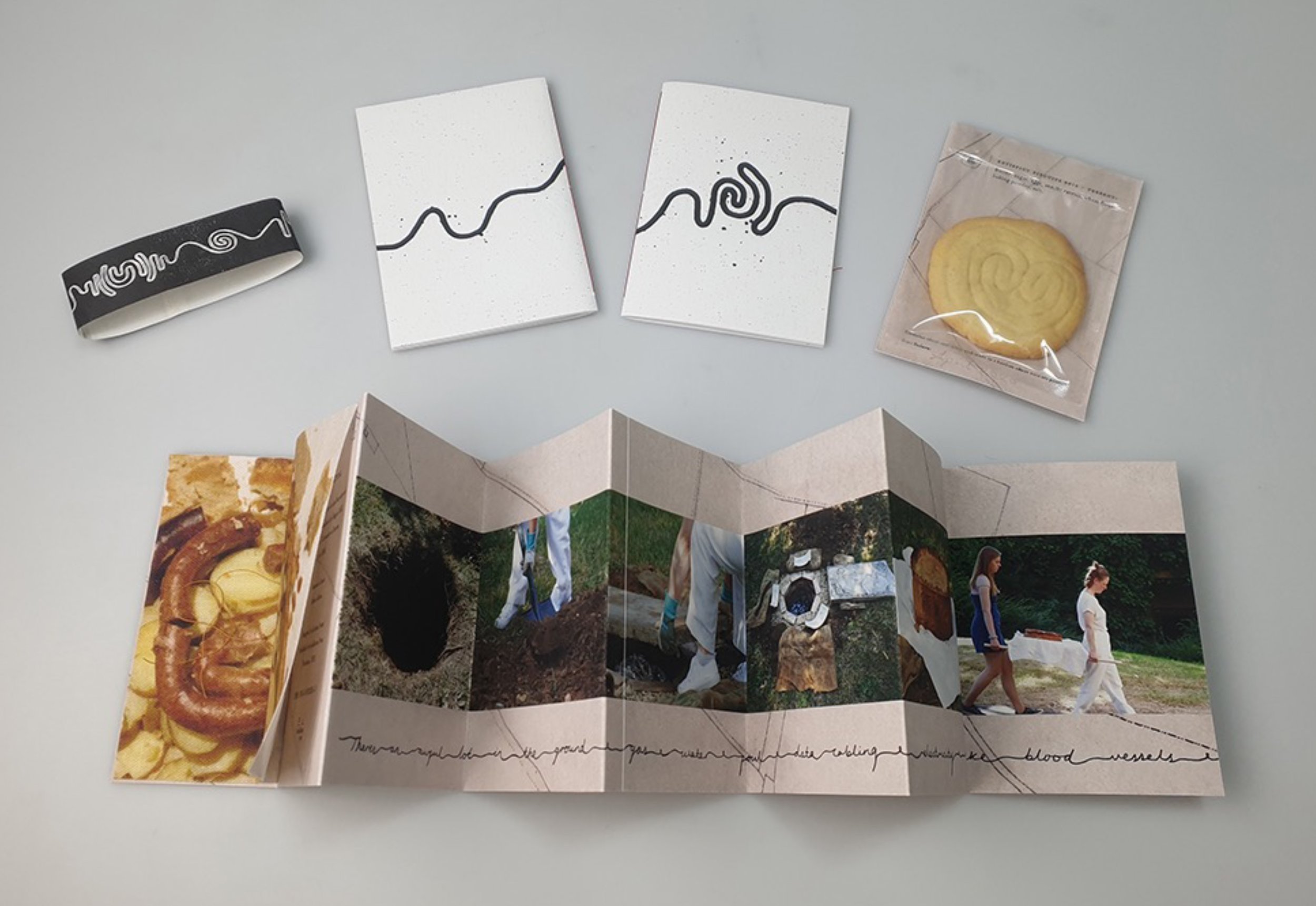
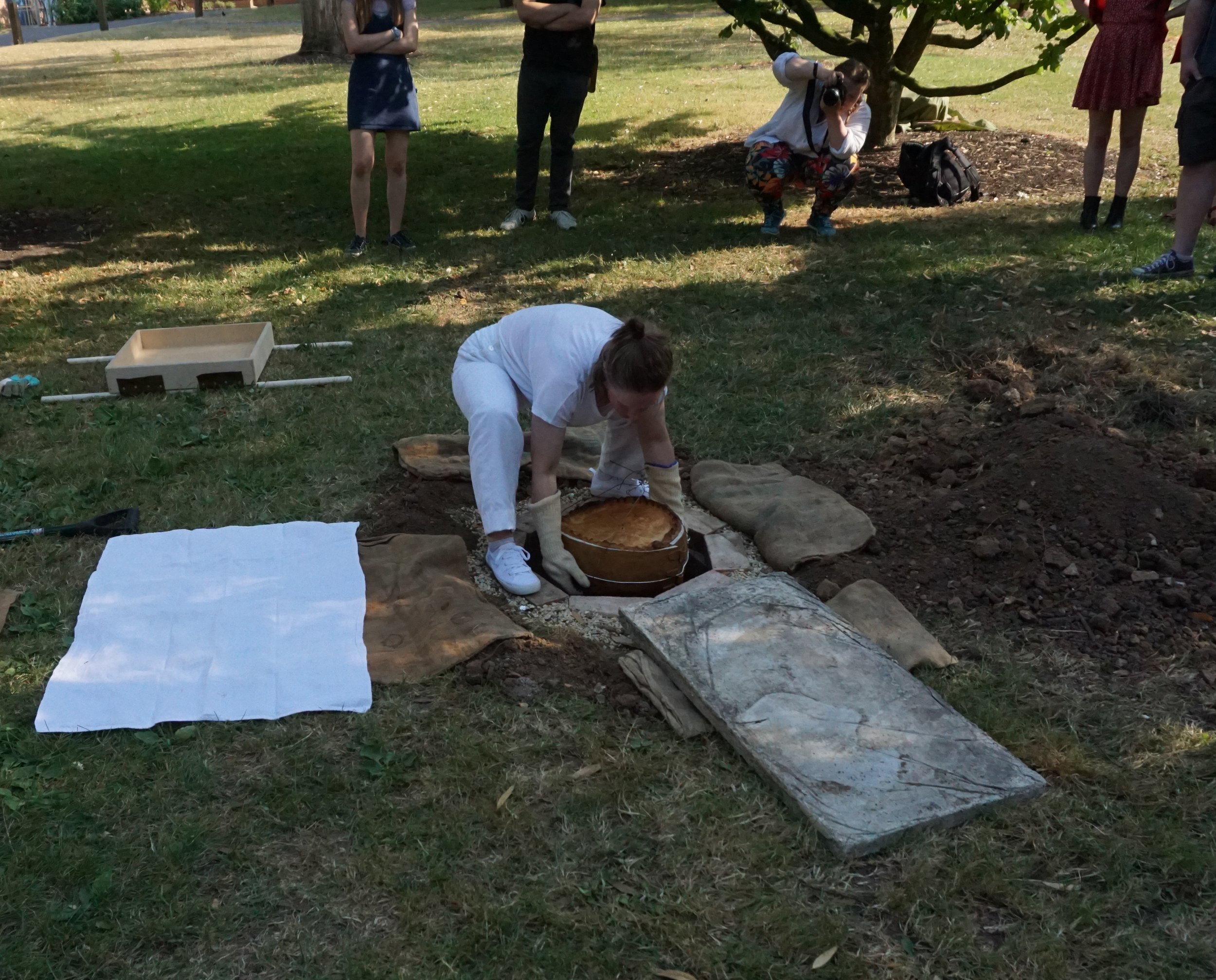
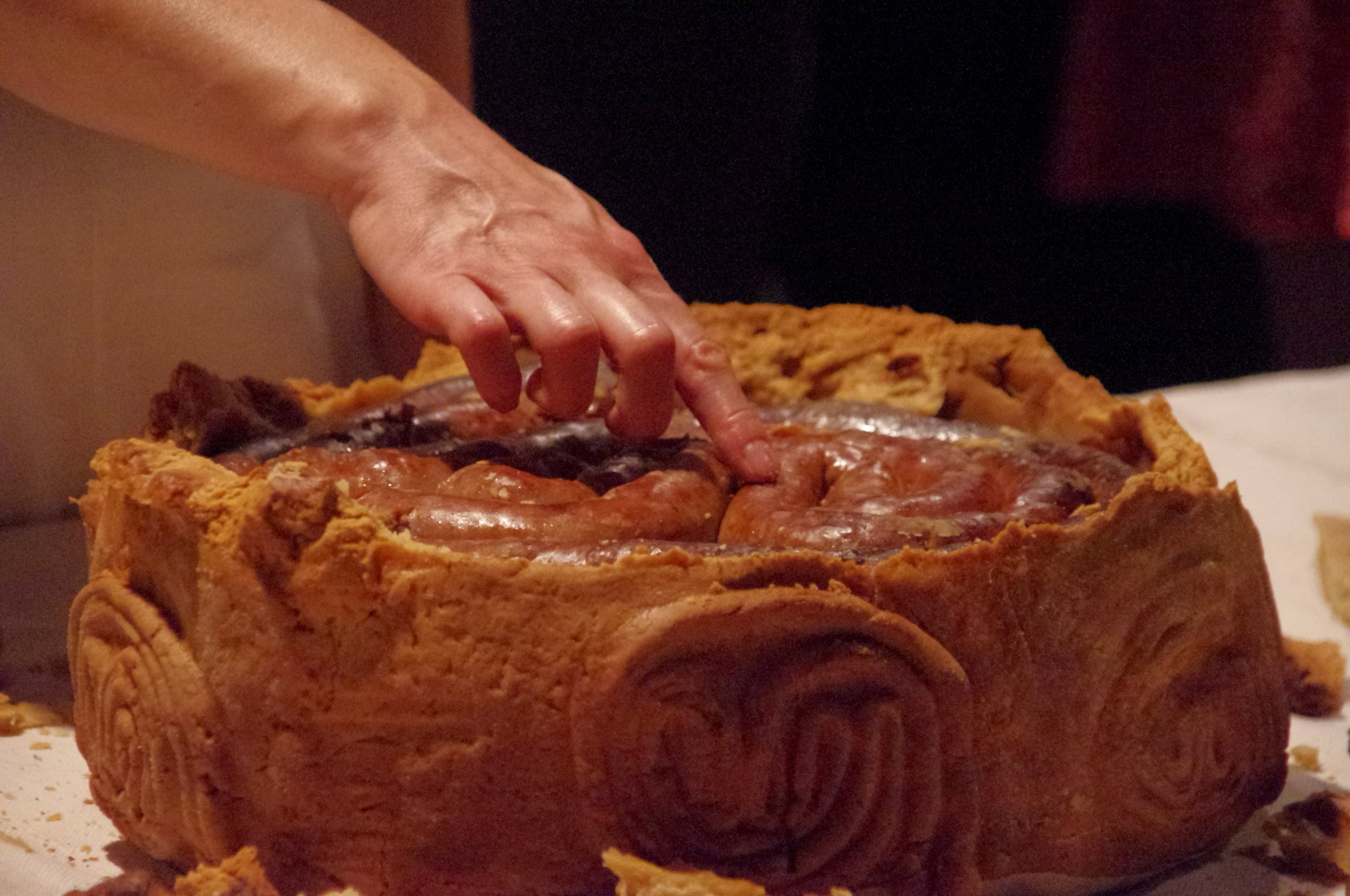
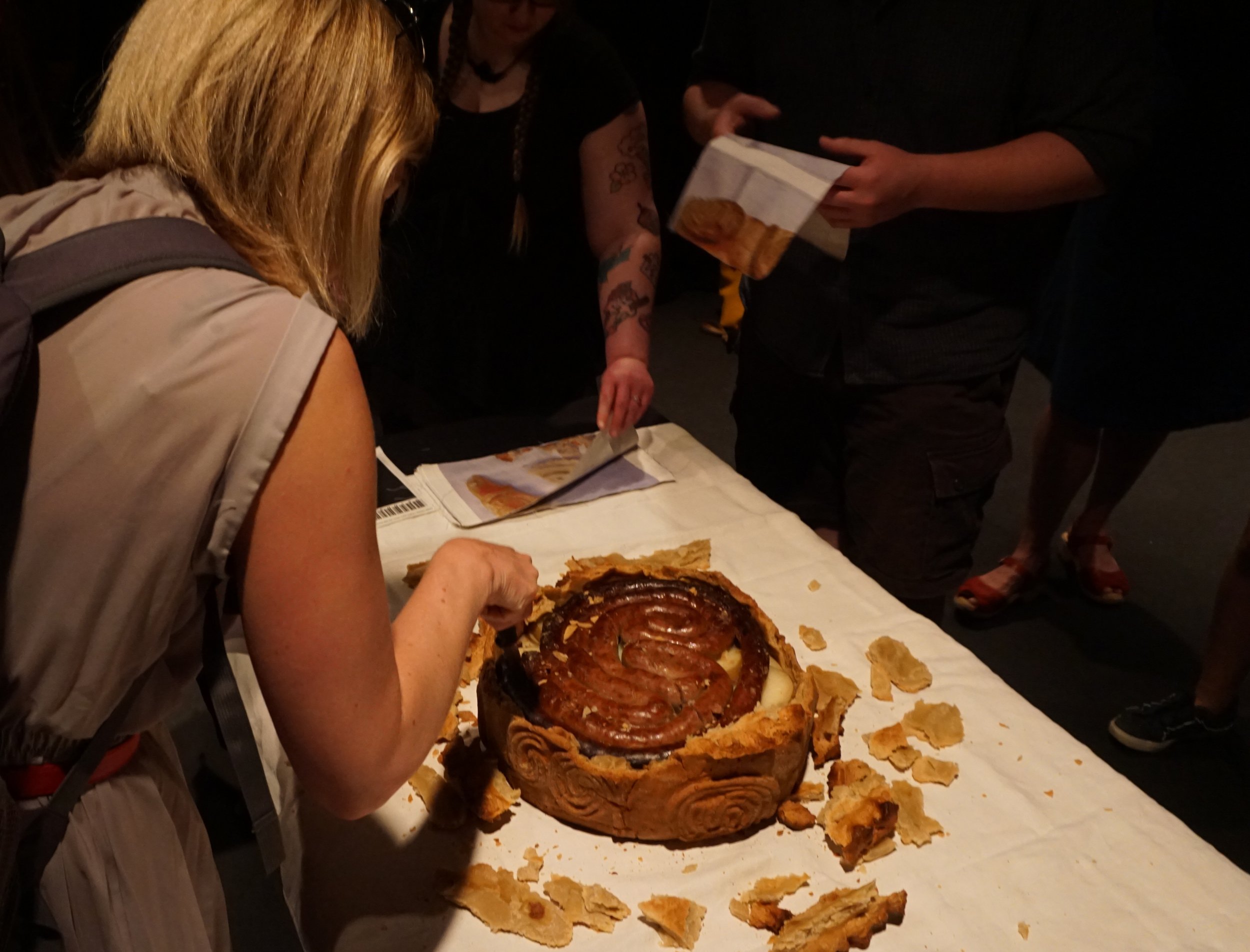
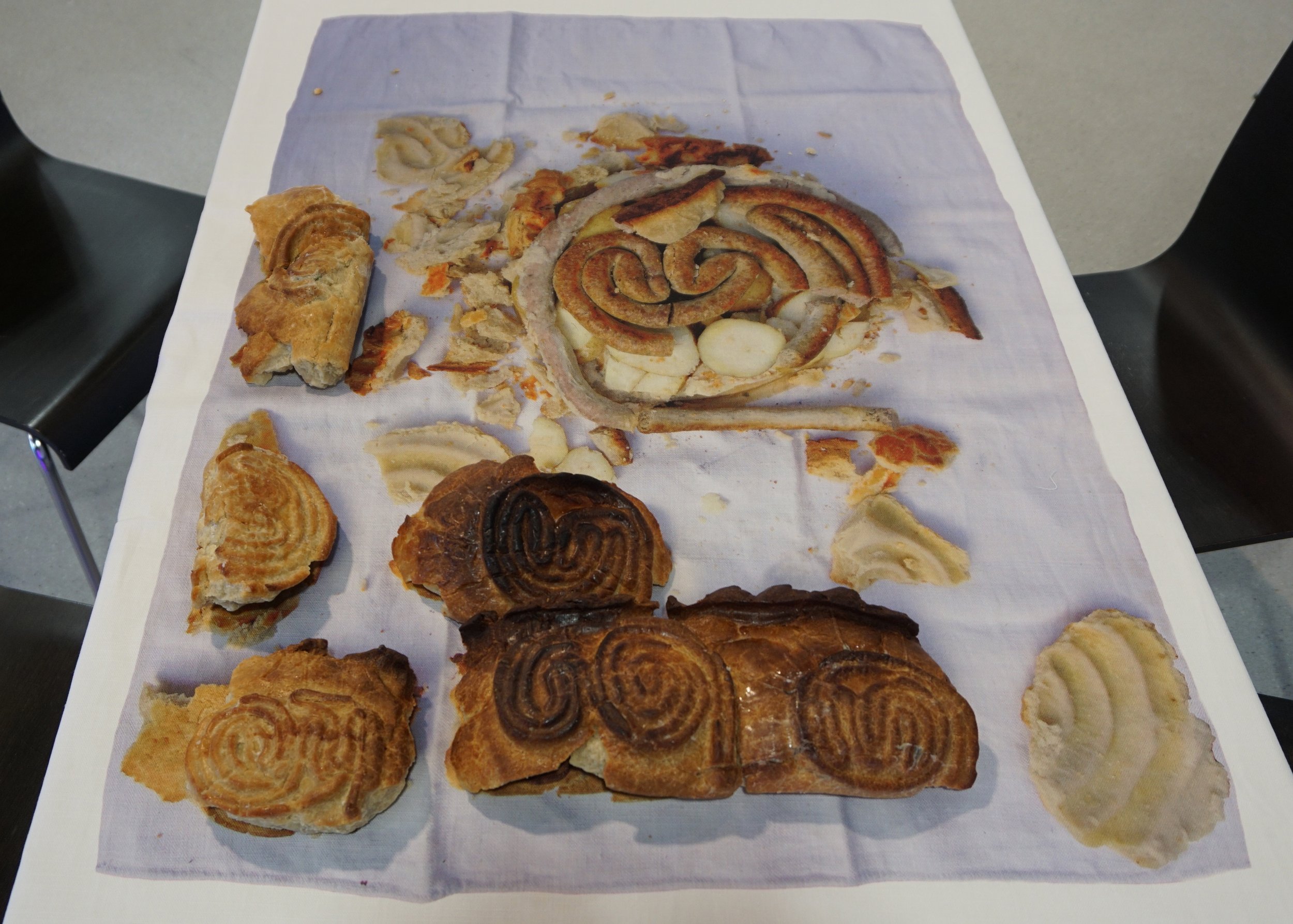
The above photos are - Extispicy in the Everyday 2016 - ongoing…
A Woman Holding a Liver 2017 - Performance: Wimbledon Space’s ACTS RE-ACTS 4: Performance Laboratory, Wimbledon College of Art, 4 March 2017. 1 hour. - Photography by Catinca Malaimare
Our-Palace-Unearthing & Our-Palace & Our Palace of Intestines for Stag(e) Hill 2018 - Participatory performance, part of Digesting Ritual research event convened by Adam Alston at Ivy Arts Centre, University of Surrey, Guildford 6 July 2018. Photography Jolyon Gardner
Our Palace of Intestines: Ruin 2018. Printed linen-cotton, hot water pastry fragments
In Extispicy in every day 2018 solo exhibition. Part of Digesting Ritual research event convened by Adam Alston at Ivy Arts Centre, University of Surrey, Guildford 6 July 2018.
Digesting Ritual 2019
Artist book publication with Adam Alston, designed by Kristen Fraser. Published by Bookroom Press, Farnham, 2019.
The publication includes an inkjet concertina photobook with a digital printed cotton-linen insert, two pamphlets for each of the texts, and an Extispicy biscuit, shortbread incised with a drawing from a clay extispicy model from Mesopotamia all held within a belly band. Produced and bound by Amanda Couch and Kristen Fraser.
https://www.thisisunbound.co.uk/products/digesting-ritual
3 – We are always asked what other artists influence us, we want to know what art you don’t like and which influences you?
I have loads of artists who influence me. They range from specific works to whole practices depending on what I am working with or about. Often, I make homages to a work, image, or artifact, re-making it with my perspective, in the materials, I am currently thinking through. Roberto Cuoghi as I mentioned earlier is an influence here. I recently made a version of Man Ray’s portrait of the surrealist artist and occultist Ithell Colquhoun when I was harvesting the wheat I had been growing in my own garden, part of Becoming with Wheat and Other More-Than-Human Others. This body of work has also been influenced by east-Asian artist Simryn Gill’s 1999 black and white photographic series, Vegetation where she is merging with plant and landscape adorned with the particular foliage of the environment as headwear that conceals her face. Partially informed by this work, I ventured into strawcraft and saw a way of removing my human/animal face with a series of masks for sowing and harvesting wheat. Since seeing the big show at the Whitney in New York in 2005, Ana Mendieta’s work has been a big influence, her relationship with landscape, ritual, and our mythological past.
4- If you could go back 10-20 years what would you tell your younger self?
Chill out! Learn to breathe, slow down and calm down. As this issue of Haus Arrest is all about Wellbeing, it is apt that I might send a message to my younger self about how to manage the anxiety that was and still is (especially in these pandemics and environmentally devastating times!) a major part of my everyday existence. I would tell myself that it is ok and that it actually will make you stronger! Things like doing yoga daily, which one day you will end up doing! (I would never have believed it!) For my problematic guts, I wish I could shout loudly into the past, stop eating onions, garlic, lentils, and beans! You’ll feel so much better! I would also whisper, there are many things you can’t control so learn to let them go! Spend more time doing nothing and getting out into nature. I always felt a lack in my teens and twenties. I was very aware of knowledge and anxious about what I didn't know. I wasn't brought up in a house of books or ideas and I felt like I had loads of catching up to do but found reading a huge struggle. When I discovered I was dyslexic and dyspraxic that helped to understand how my brain worked and its approach to learning. So I would urge my younger self to get screened.
5 – If you could go forward 10-20 years what do you hope to have done or not done?
I would hope that I had worked out a way to remain calm even in light of the crazy! I hope to still be alive and healthy. All my life, since even as a child I couldn’t see myself in the future. Where other people envisioned marriage, children, careers, I wasn’t sure I would even live. It wasn’t that I was sick or anything, just that anxiety clouded dreaming. I would get so overwhelmed by future planning and I’d often get caught up in the seemingly always busyness of the present.
Who knows where we'll be in 10 and especially 20 years? I am glad I have started to learn about wild plants and how to cultivate domesticated ones (a bit), although foraging (once you know some key greens) is a much easier pursuit for nourishing food than growing things and keeping the slugs off them! So I hope to be much more self-sufficient with my food and to have better food security so I am not as reliant on problematic food systems that are extractive and unjust. I would like to have developed a much deeper knowledge of ecology, food systems, and wild medicinal and food that wasn’t really passed down to me or to my mother or grandmother, (although my father’s family were gardeners and vegetable growers). So I am trying to learn about them from the past, and bring them into the future to nourish you (my future self).
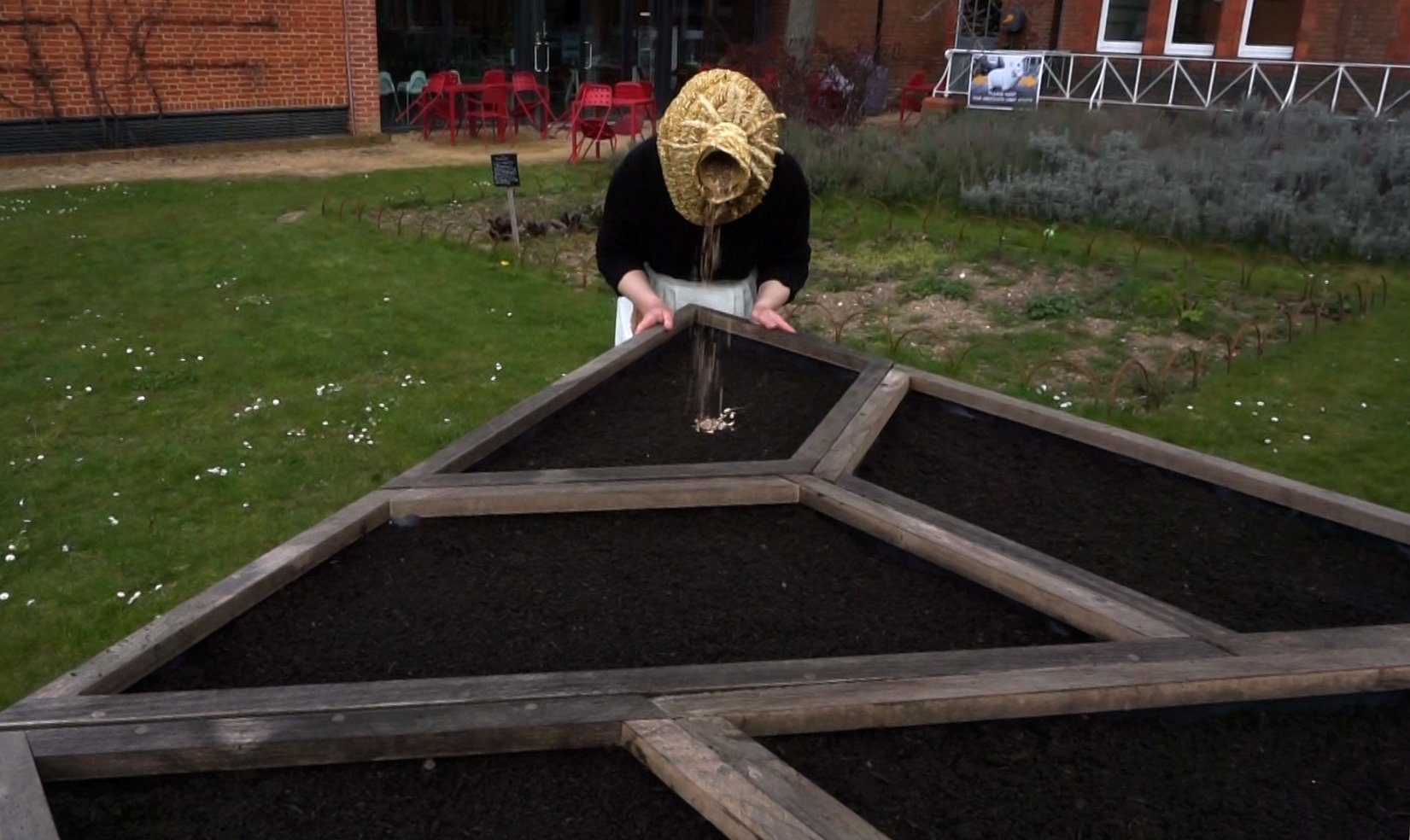
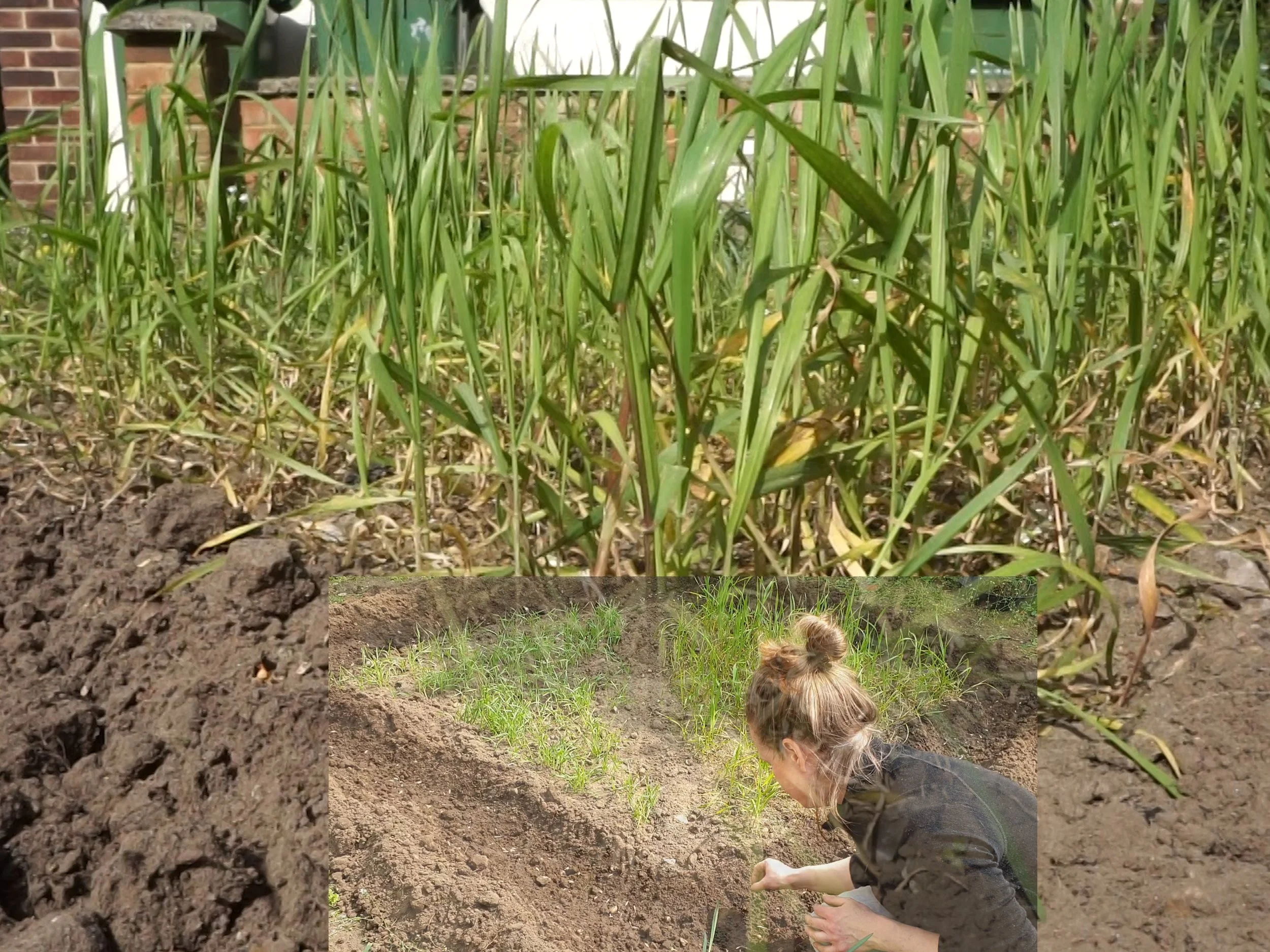
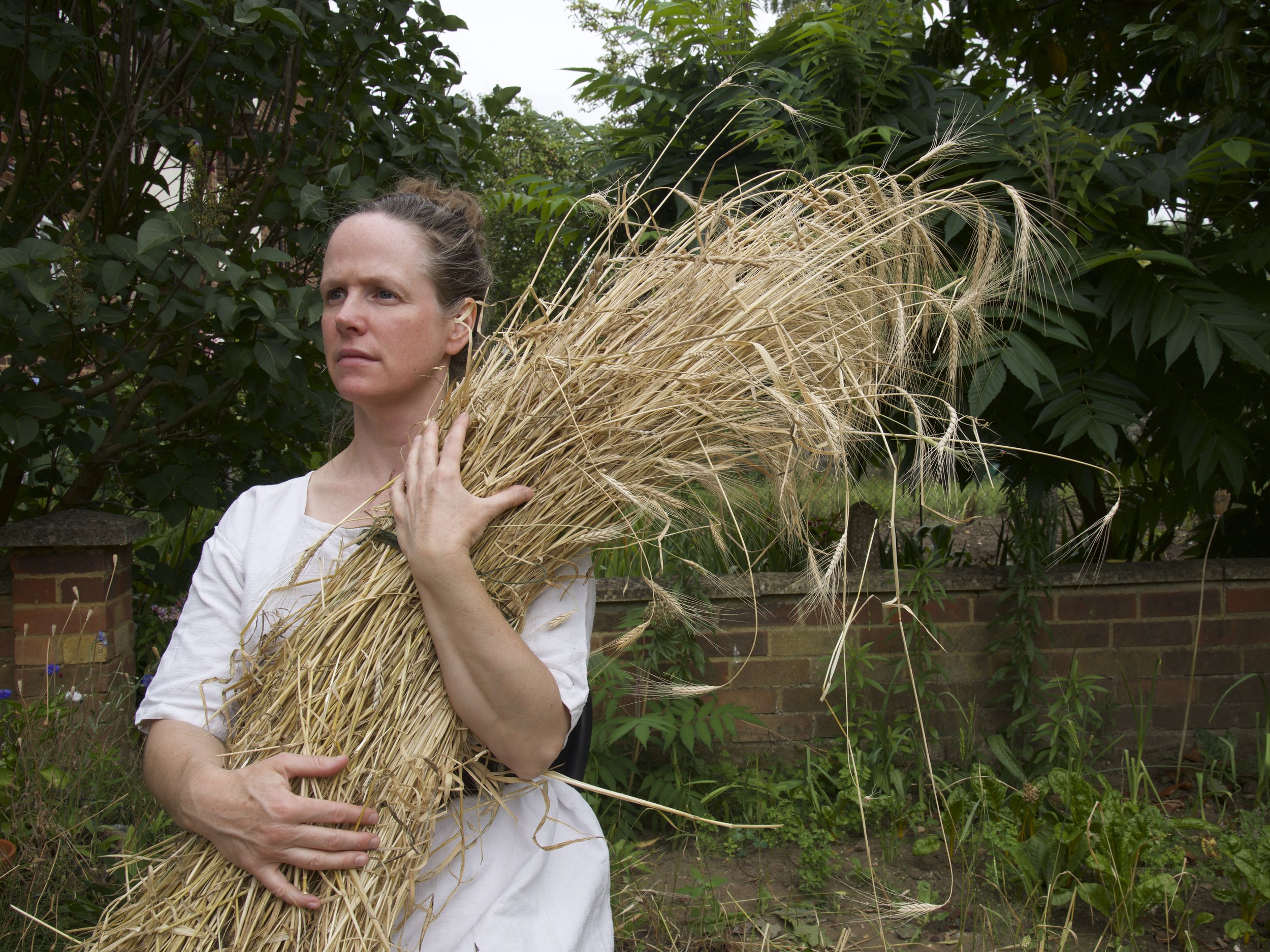
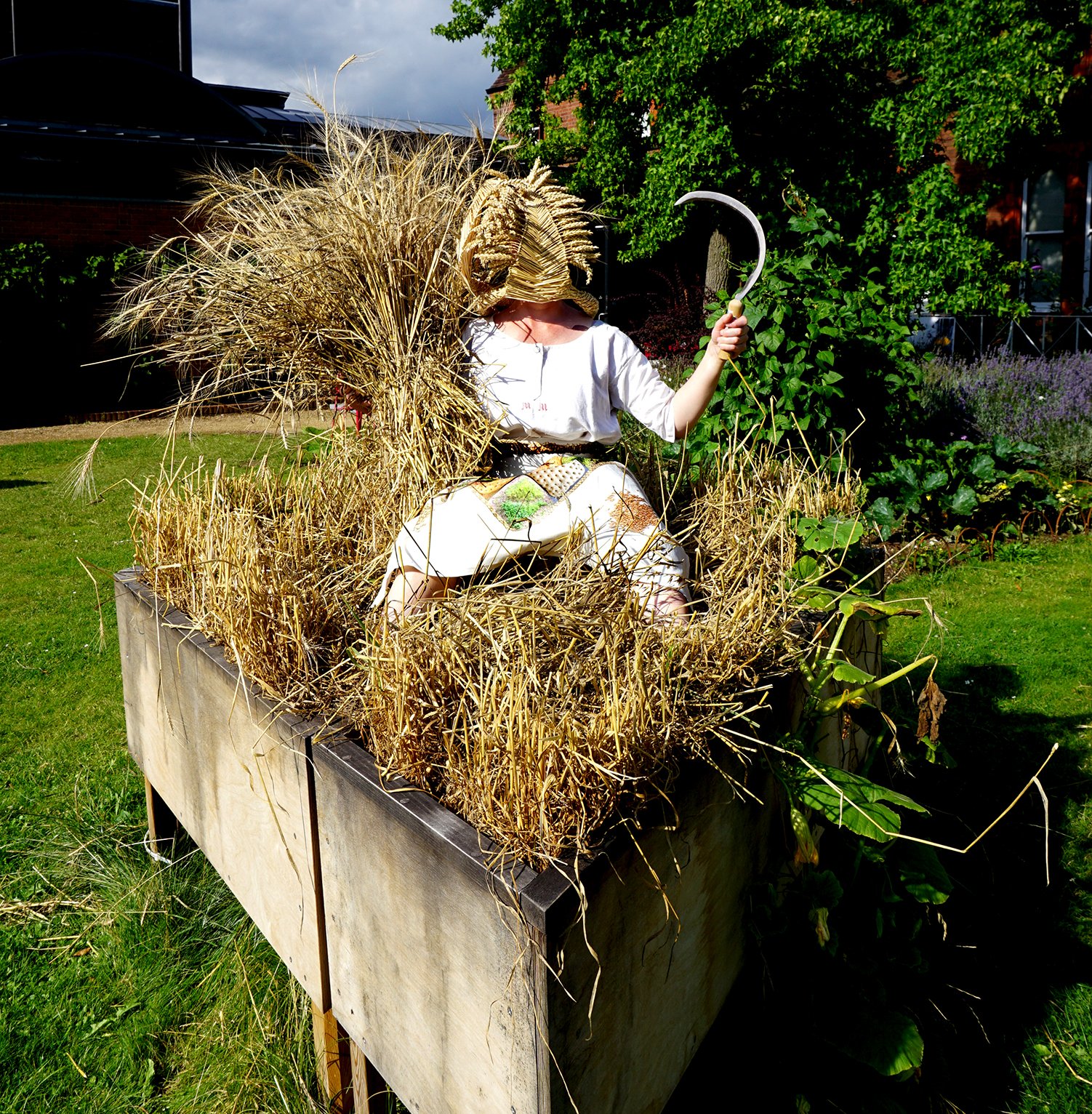
The above photos are - Becoming with Wheat and Other More-Than-Human Others 2018-ongoing
Becoming with wheat-Still - Ongoing Performances of the World 2018-19 durational film part of Becoming with Wheat and Other More-Than-Human Others 2018-ongoing
Becoming with Wheat-Sowing-2021
Sowing Ritual video still in Ongoing Performances of the World 2021 durational film part of Becoming with Wheat and Other More-Than-Human Others 2018-ongoing
Becoming with Wheat-Harvesting-2021
Harvest and Grain Spirit part of Becoming with Wheat and Other More-Than-Human Others 2018-ongoing
Photography by Jolyon Gardner
https://merl.reading.ac.uk/explore/online-exhibitions/the-commons-re-enchanting-the-world/
The above photos are - Books as Bodies 2016 - ongoing…
Books as Bodies, 2019 - Performance-lecture, Wellcome Library, London, showing chapter ‘Chapter Two: Birthing Amulet Rolls’. Photography by Steve Pocock
***********
More info on what Amanda is currently doing and has done is here with lots of links to performance, podcasts, and research that she has done.
These are the current web links, one of which is in the process of being updated and will go live within a few weeks so do check back.
https://research.uca.ac.uk/view/creators/Couch=3AAmanda=3A=3A.html
https://amandajcouch.wordpress.com/
https://www.amanda-couch.co.uk/
http://amandacouch.co.uk/ (this one will go live in a couple of weeks)
Twitter: @amandajcouch
Instagram: @amandacouch_art &. @reenchanting_the_commons
'Something to do with Art' Podcast by Robert Good, episode 16.
https://soundcloud.com/robertgood_art/amanda-couch
The Commons: Re-Enchanting the World project co-curated with Catherine Morland, 27 July 2021 – 30 January 2022, The MERL, Reading. https://merl.reading.ac.uk/event/the-commons-re-enchanting-the-world/
‘The Surfaces of Skin and Screens’, Wellcome Collection, streamed live on 18 Feb 2021, https://www.youtube.com/watch?v=aKp1ZZw2mPk
Couch, Amanda, and Alston, Adam (2019) Digesting Ritual Farnham: bookRoom Press. Limited edition artist book. https://www.thisisunbound.co.uk/products/digesting-ritual
Couch, Amanda (2019) ‘Reflections on Digestions and Other Corporealities in Artists’ Books’. In: Bolaki, Stella, The Journal of Medical Humanities - Special Issue: Artists’ Books https://doi.org/10.1007/s10912-019-09592-8
Couch, Amanda (2018) ‘Extispicy in the Everyday: An Art Project-in-Progress’ & ‘Our Palace of Intestines: An Art Project-in-Progress’. In: Hey, Maya & Ketchum, Alex D. (eds.) CuiZine: The Journal of Canadian Food Cultures- Special Issue: Food, Feminism, Fermentation http://dx.doi.org/10.7202/1052116ar


